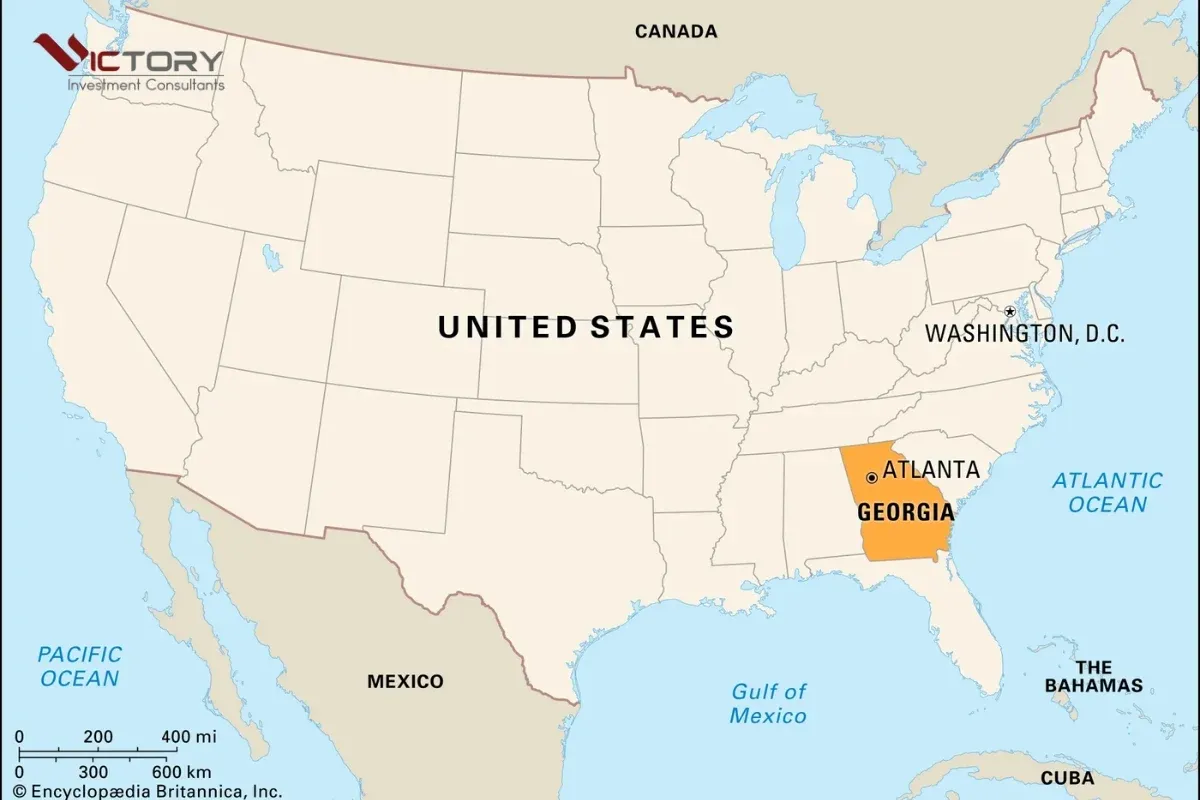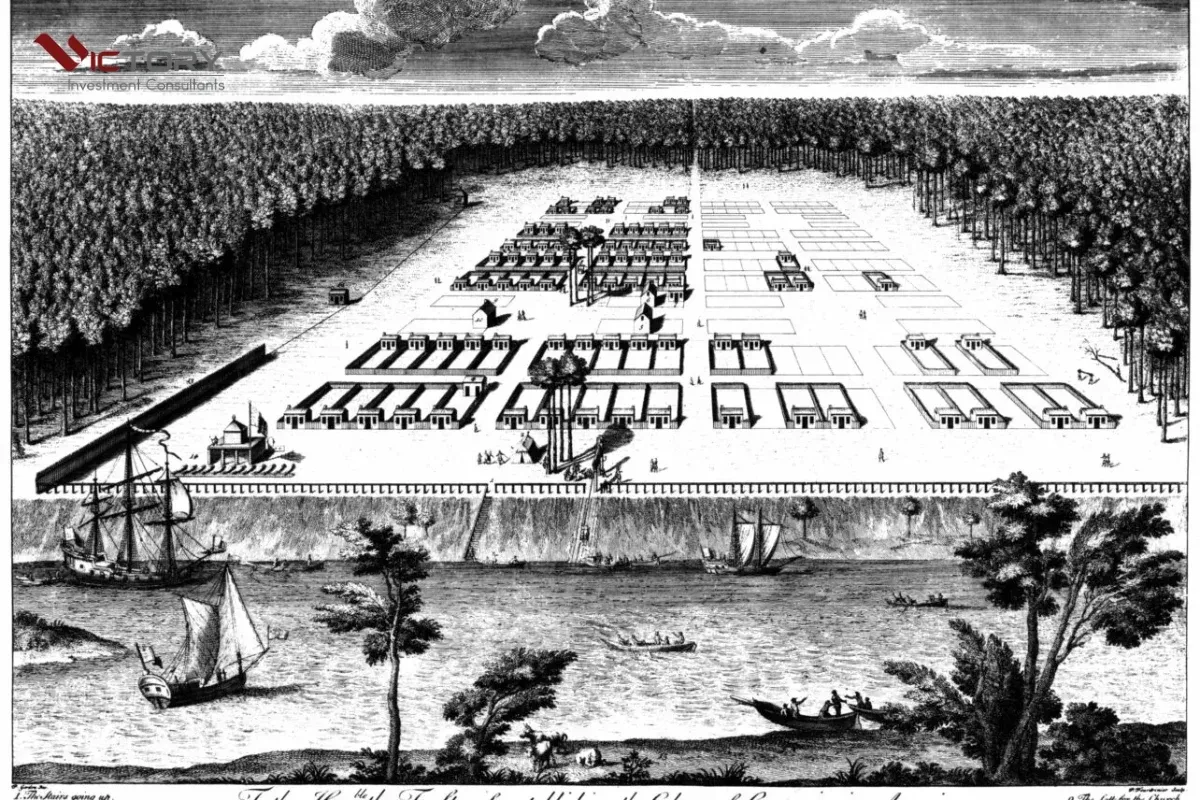Georgia, a state in the Southeastern United States, is renowned not only for its dynamic economy and beautiful natural landscapes but also for its rich historical tapestry. From the footprints of the native Cherokee and Creek peoples, the arrival of early European explorers, to pivotal events in the American Civil War, Georgia holds countless captivating stories. Join “Du lịch khắp thế gian” (Travel the Globe) as we explore the famous historical routes in Georgia, where the past and present intertwine, offering unique and profound travel experiences.
Georgia: Crossroads of History and Culture
Georgia, with its strategic geographic location, has served as a crucial crossroads throughout American history. From Native American trails, Georgia gradually developed trade, military, and migration routes, each bearing distinct events and stories.
This land was once home to powerful Native American tribes such as the Cherokee, Creek, and Chickasaw. Their trails were not merely transportation routes but also cultural arteries, connecting communities and territories. With the arrival of Europeans, particularly the establishment of the Georgia colony by James Oglethorpe in 1732, new routes began to form, serving the economic and military purposes of the settlers.
Throughout the 18th and 19th centuries, Georgia witnessed the robust development of both land and water routes. Savannah, a vital port city, became the starting point for many inland trade routes. During the American Civil War, Georgia became a fierce battleground, and railroads and roads played a pivotal role in transporting troops and supplies.
Today, the historical routes in Georgia are not only legacies of the past but also attractive destinations for tourists. They offer opportunities to explore natural beauty, learn about indigenous culture, and relive the heroic chapters of American history.

Journey Back in Time on Georgia’s Historical Routes
Savannah River Trail: From Seaport to Inland
The Savannah River, the lifeblood of Georgia, has played a crucial role in the region’s historical development. From the port city of Savannah on the Atlantic coast, the Savannah River opens up a vital waterway deep into the interior, connecting to commercial and agricultural centers.
During the colonial era, the Savannah River was the primary trade route, allowing the transport of goods such as cotton, rice, and furs from the interior to the seaport for export to Europe and other colonies. Towns and plantations sprung up along the riverbanks, transforming the area into a prosperous economic region.
Today, visitors can explore the history of the Savannah River in many ways. Taking a boat trip along the river allows you to admire the beautiful natural scenery and ancient architectural structures along the banks. The city of Savannah, with its charming historic district, is an ideal starting point for exploration. Visitors can stroll along cobblestone streets, admire colorful historic houses, and learn about the city’s maritime trade history.
Heading upstream, you will reach Augusta, Georgia’s second-largest city and another important historical center. Augusta once served as the state capital and played a significant role in the American Revolution and Civil War. Today, Augusta is famous for the prestigious Masters Golf Tournament and historical landmarks such as the Augusta Museum of History and St. Paul’s Episcopal Church.
Trail of Tears: Footprints of the Cherokee People
The Trail of Tears is not just a route but a tragic chapter in American history, concerning the forced removal of Native American tribes from their ancestral lands, including the Cherokee in Georgia.
In the 1830s, the U.S. government implemented a policy of relocating Native Americans west of the Mississippi River. The Cherokee, who lived on fertile land in North Georgia, were forced to leave their homeland and embark on a thousand-mile journey to new lands in present-day Oklahoma. Thousands of Cherokee people died along the way due to starvation, disease, and exhaustion, giving this path the name “Trail of Tears.”
Although most of the Trail of Tears lies outside of Georgia, the state still preserves relics and sites related to this heartbreaking event. The Cherokee National Historic Trail at Chattahoochee River National Recreation Area is an important site where visitors can learn about Cherokee history and culture, as well as the suffering they endured on the Trail of Tears.
Additionally, the Cherokee History Museum in Calhoun is a meaningful destination, displaying artifacts and stories about Cherokee history and culture, helping visitors gain a deeper understanding of this tragic past.
Civil War Railroads: Military and Commercial Artery
During the American Civil War (1861-1865), Georgia became a vital battleground, and the state’s railroad system played a pivotal role in transporting troops, weapons, and supplies for both the Union and Confederate armies.
Rail lines such as the Western & Atlantic Railroad and Central of Georgia Railway became strategic targets for both sides. The Andrews Raid of 1862, a famous event in the Civil War, took place on the Western & Atlantic Railroad in Georgia, when Union soldiers attempted to sabotage the line to cut off Confederate supply routes.
Today, visitors can explore the history of Civil War railroads in Georgia through museums and historical sites. The Southern Museum of Civil War and Locomotive History in Kennesaw displays a collection of historic locomotives and railcars, telling the story of the railroad’s role in Georgia and U.S. history.
Furthermore, many towns and cities in Georgia still retain historic train stations and railway-related architectural structures, reminders of a turbulent historical period.

Exploring Georgia: Beyond Historical Routes
Georgia is not only attractive for its historical routes but also for its diverse culture, rich cuisine, and stunning natural landscapes.
Diverse Culture: Georgia is a melting pot of cultures, from the indigenous Cherokee and Creek cultures, European settler culture, to the African culture of the African American community. This cultural intersection creates a colorful tapestry, reflected in music, art, cuisine, and festivals.
Distinctive Cuisine: Georgia’s cuisine is a harmonious blend of traditional Southern flavors and influences from various cultures. Famous dishes such as Southern fried chicken, cornbread, peanut soup, and especially the delicious Georgia peaches, are sure to satisfy every palate.
Beautiful Nature: Georgia boasts diverse natural landscapes, from the romantic Atlantic coastline, the majestic Blue Ridge Mountains, to lush forests and stunning waterfalls. Visitors can engage in outdoor activities such as hiking, mountain climbing, kayaking, fishing, and camping to enjoy the unspoiled natural beauty of Georgia.
Conclusion
The historical routes in Georgia are not just transportation paths, but also cultural flows, connecting the past, present, and future. A journey to explore these routes will take visitors back in time, learn about the formation and development history of Georgia, as well as the stories and people who shaped this land. Come to Georgia and experience the unique historical routes, to deeply appreciate the cultural and historical beauty of this Southeastern U.S. state.
To make your Georgia exploration journey complete, don’t forget to follow the “Du lịch khắp thế gian” (Travel the Globe) blog to update the most useful travel information and experiences!